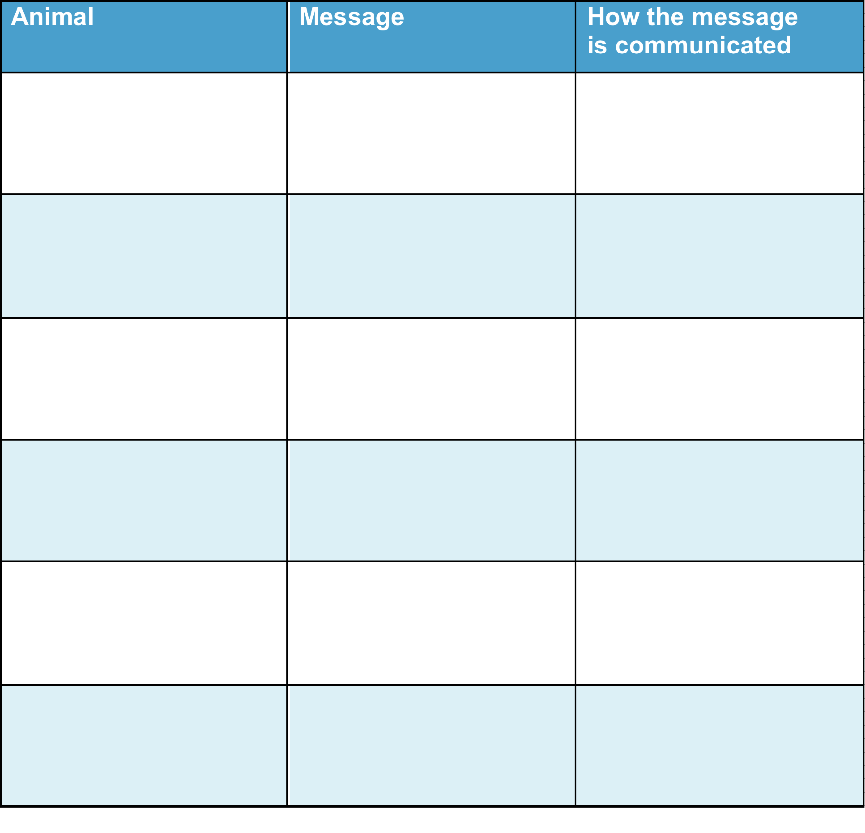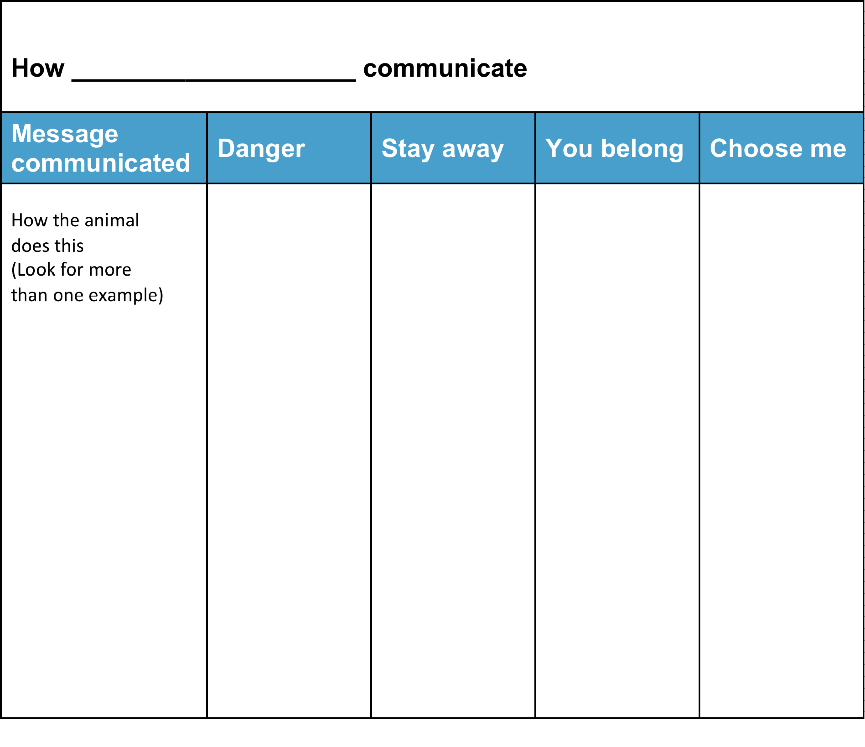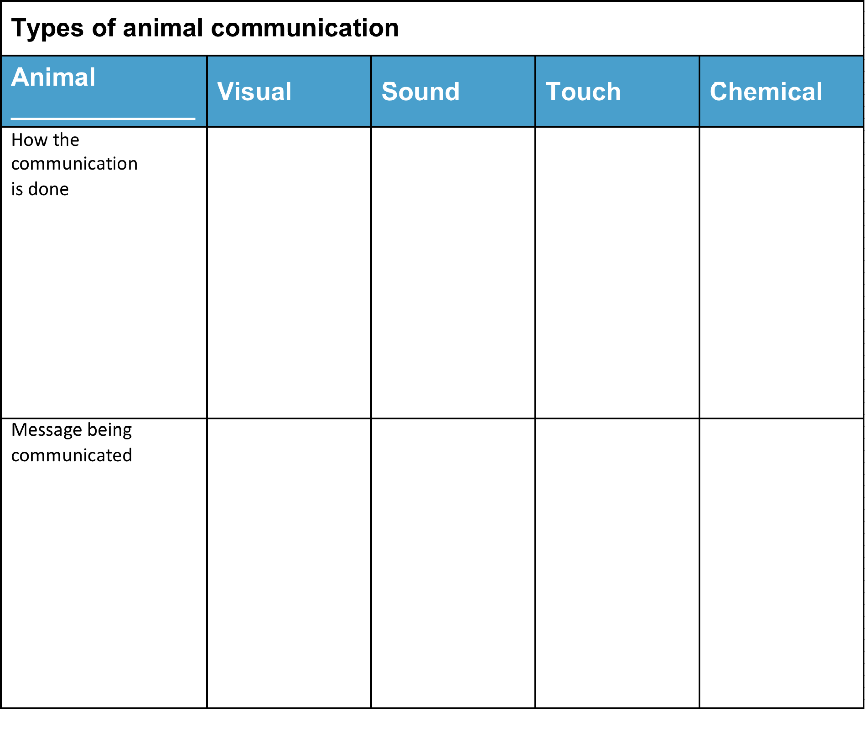Information for Teachers
Curriculum links
Australian Science Standards
BS (ACSSU73) Living things depend on each other and the environment to survive
BS (ACSSU73) Interactions between living things may be competitive or mutually beneficial
New Zealand Science Achievement Objectives
LW: The key structural features and functions involved in the life processes of plants and animals
NS: Scientists’ investigations are informed by current science theories and aim to collect evidence that will be interpreted through processes of logical argument
Helpful websites
You may want to direct your students to websites to help with their investigations.
Students could begin by watching this video to learn about other animals communicate:
https://www.youtube.com/watch?v=i74RbATjBk4.
They can choose one of the featured animals to investigate further by searching using the word communication and the name of the animal.
How to search the internet
1 Keep your request short
Fewer words will give a more accurate search.
2 Choose exactly what you want
For example: Arctic Circle Climate
3 Use quotes
Double quotes around a set of words tell the search engine to consider those exact words in that exact order without any change. For example: “Arctic Circle Climate”
4 Use the plus sign (+)
If you add a plus sign (+) between words, the internet will search for all the words. For example: migrate+birds+whales+mammal
5 Use the minus sign (–) to say what you don’t want
Use a minus sign (–) to show words you do not want to appear in your results. For example: if you search for burrowing animals and do not want mammals in your search, –mammals will exclude mammals. Note that you need to put a space before the minus sign for the word to be excluded.
6 Be very clear about what you don’t want
Part 1
Ask questions and make predictions
After reading How Animals Communicate, you may have many questions about how or why animals communicate.
List your questions
- Compare your list with questions that others have.
- Choose a question you would like to investigate.
- You can work alone, with a partner, or in a small group.
You may want to choose one or more of these questions to investigate
Q1. Which animals use sound, body language, smell, touch, or electricity to communicate? What do they communicate?
Q2. How do different animals communicate the same thing, e.g. go away, choose me, danger, this is my place or territory?
Q3. Can all animals communicate?
Q4. Choose a specific animal and find out about how they communicate, e.g. ants, octopuses, dolphins, frogs.
Go to Part 2 Plan and investigate →Part 2
Plan and investigate
Do searches in the internet or in books or talk to people who can help to find the information you are looking for.
Your teacher may suggest suitable websites for further information.
Go to Part 3 Record and analyse data →Part 3
Record and analyse data
Find a way of recording your information that will allow you to see any patterns in the data.
Data Charts for How Animals Communicate
 Download Chart
Download Chart
Go to Part 4 Evaluate the information →
Part 4
Evaluate the information
1. Look over the information you have gathered and the patterns you have found.
2. Search for other patterns.
If you have investigated types of animal communication, think about how this information can be classified.
3. Makes notes about what you find.
Go to Part 5 Communicate and share ideas →Part 5
Communicate and share ideas
Look over all of the information that you have gathered in your investigation.
What are the most important ideas about your topic?
Make a chart showing the most important ideas.
 Download Chart
Download Chart
 Download Chart
Download Chart
← Return to menu
